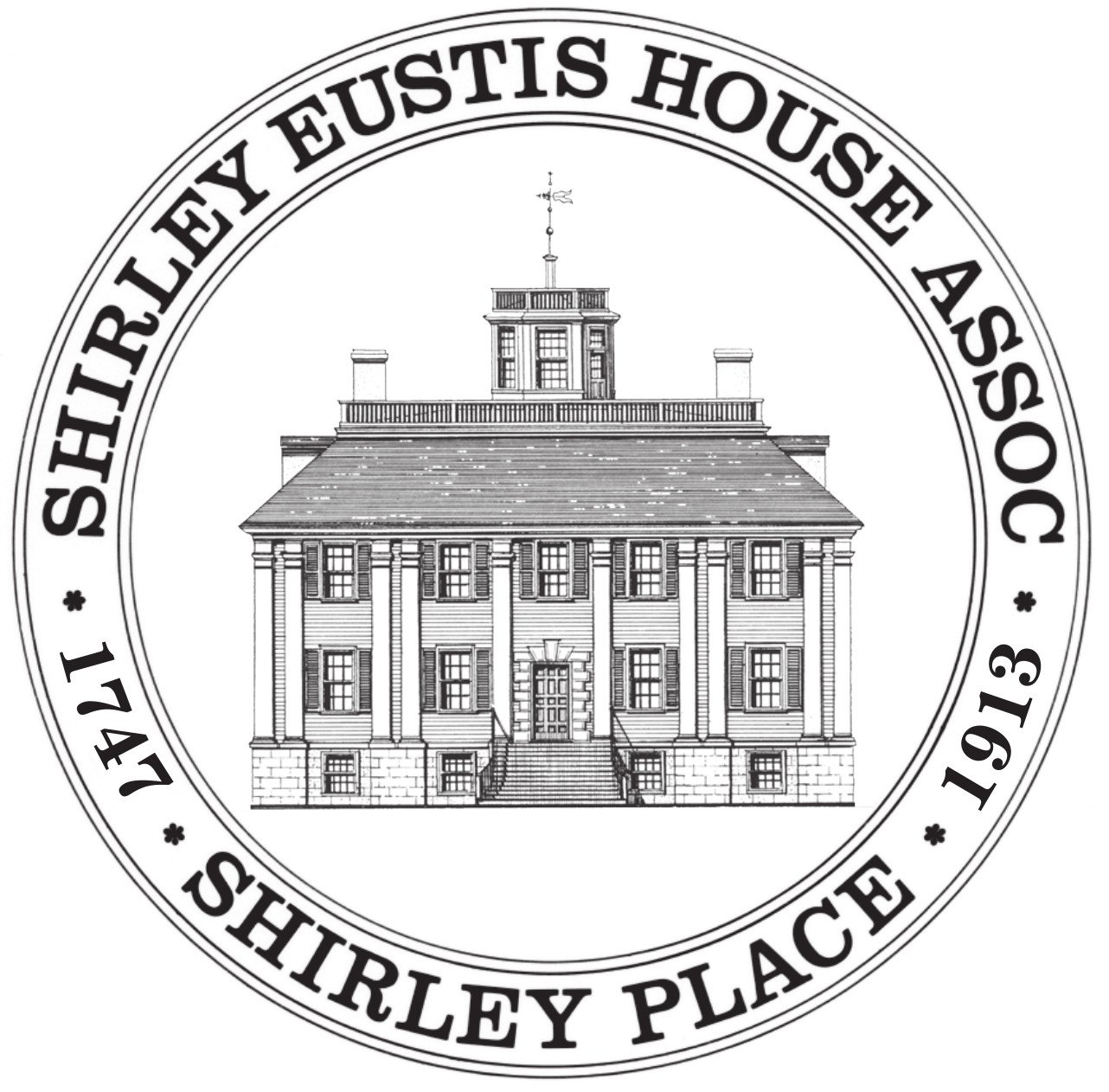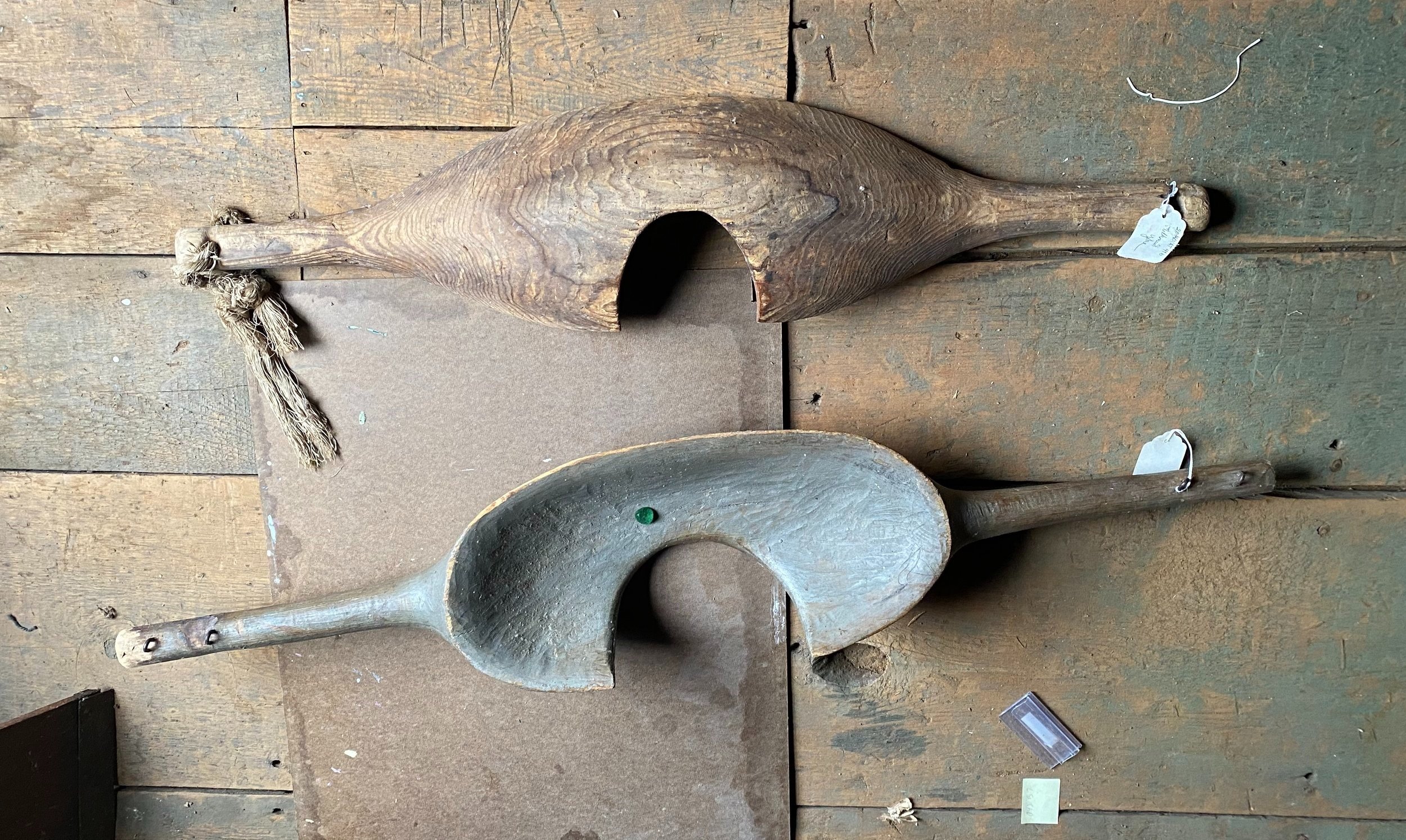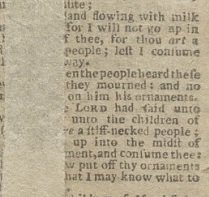By Rachel Hoyle
Two shoulder yokes from the SEHA collection. For at least 1,000 years yokes like these have been used by peddlers and laborers to carry everything from bricks to water to food and laundry.
I have enjoyed nearly every single aspect of my internship this semester at the Shirley-Eustis House in Roxbury. My duties have led me to a much deeper understanding of how museums operate, from the mundane hanging of Christmas lights for an evening event to the glamorous preparation of the house for use as a backdrop in multiple documentaries. The site’s Executive Director, Suzy Buchanan, has been gracious enough to let me trail behind her on Fridays, learning exactly how she does what she does.
However, when I use the word “nearly,” there is one particular aspect of my internship that has brought about quite a bit of frustration: the lack of original sources to catalog for my budding exhibit. Given that my exhibit will focus on enslaved Africans at the house, some of whom do not even have their names written in the historical record, it is not exactly surprising that no artifacts of their existence have survived the past three hundred years. Add to that injustice the constantly changing structure and use of the Shirley-Eustis House (at one point it was even used as a “home for wayward girls”), and it is a recipe for the reproduction rather than the display of original artifacts.
There are other historians who have made substantive arguments out of fewer artifacts. Robin Fleming, a professor at Boston College, won the MacArthur Genius Grant in 2013 for her work illuminating the lives of lower-class Roman Britons.[1] While artifacts demonstrating how the wealthy lived in Roman-occupied Britain are relatively common, Fleming provided a view of poor and illiterate members of that society that had never been achieved before her landmark work. I relate to Professor Fleming’s struggle of having limited material evidence to interpret a specific point in time, but it is not as if I am the first person studying African enslavement to encounter this problem, either. The staff at the National Museum of African American History and Culture (NMAAHC), when collecting the first artifacts for display in the museum, ventured around the nation to track down relevant objects. Physical artifacts of African American history had often been either lost, passed around to various families, or stored in people’s attics for generations.[2]
It was not negligence keeping these items stowed away – it was an instinct of preservation. Many African American familiescertainly knew the value of these (heirlooms..Rex Ellis, Associate Director of Curatorial Affairs at the NMAAHC, recalled the moment he first came face to face with infamous slave revolt leader Nat Turner’s Bible. The woman who had decided to gift it to the NMAAHC from its longtime place in her family’s home in Virginia remarked that “It was time for it to leave here…because there’s so much blood on it.”[3] It was not until the NMAAHC’s founding that many of these artifacts were seen outside the confines of a single family or community, because there were few museums and historic sites willing or able to display them with a proper view toward the artifacts’ troubled? and sometimes disturbing histories.
NMAAHC Founding Director Lonnie Bunch began a groundbreaking campaign to collect these artifacts upon learning that the museum had been green-lit. Titled “Saving African American Treasures,” Bunch deployed conservationists proper term is “conservators” and other museum professionals around the United States in an effort to save artifacts which African-American families had protected and preserved for generations. In total, the campaign unearthed tens of thousands of artifacts for the NMAAHC, most of which were free-will donations made by people who decided their personal collections were finally able to be seen and respected in the manner they necessitated.[4] This distinction between a lack of material culture and a preservation of the very same culture is essential. How many other artifacts are still hidden in an attics, trunks, or basements because museums and historic sites have not been ready to display them with respect? How many of those relate to the experiences of enslaved Africans? (A passage from Exodus in Nat Turner’s Bible pictured above left.)
I thought frequently about these stories while I debated my path forward regarding artifacts in my proposed exhibit. Unfortunately, I did not have the time or resources that Bunch and the NMAAHC had to track down material culture relating directly to the house or its enslaved occupants. And while there are surviving manuscripts and records of enslaved Africans in the Shirley-Eustis House, those grainy black and white copies do not have the same effect in an exhibit as tangible, touchable, evocative objects. Even neighborhood oral histories, which provide us an engaging idea of how the house’s story has evolved over time, do not always capture a viewer in the way that material culture does.
It was then that Suzy Buchanan, the house’s Executive Director, offhandedly mentioned something that solved my problem in an instant. In fact, she made two remarks. The first was that in the basement of the Shirley-Eustis House, right in front of the public restrooms, sat a large iron washing kettle. While it was not original to the house, she qualified, it may at least serve as an illustration of some duties enslaved people may have performed in the eighteenth century. If that was reasonable, she said, I could include it in my exhibit. I could hardly contain my excitement. There was one part of my problem rather expertly solved. It was like inspiration had knocked me over the head, and suddenly I realized that the Shirley-Eustis House also had an unexpectedly large collection of historical tools and gardening equipment in the attic of our carriage house. While we may not have been able to tell the stories of those enslaved at the house directly through artifacts with a documented connection, we could still use items in our collection to interpret their experience. This is one of the first experiences I had as a public historian in realizing the work that goes into keeping a detailed, up to date catalog of material objects at a historic site, as well as the reward that effort can reap.
The second thing Suzy reminded me of was that we at the Shirley-Eustis House were not isolated from other museums. While obviously we would not take credit for objects held at other sites, one of the benefits of designing an online exhibit was the ability to link other sites’ collections into the exhibit itself. The mission of fostering public education on enslavement was more important than simply garnering visitors for my own work. If my articles, exhibits, or interpretations led viewers to another site with more relevant artifacts, then I had done my job well. In some cases, too, repositories such as the Massachusetts Historical Society would allow photos of their objects to be used for a small fee. Using these other materials did not signify a failure on behalf of our own collections or interpretation, and there was no need to take it personally. Good interpretation comes first, and collaboration with other historic sites is not a negative by any means.
The dispersion of artifacts from the Shirley-Eustis House occurred due to war, changing ownership, renovation, and the house’s falling into disrepair in the late 19th century. It may be impossible to know where many of the site’s original eighteenth century artifacts ended up, but that does not render us incapable of interpreting that aspect of the house’s history. Learning how to interpret artifacts as an illustration of the lives of African slaves has been a remarkable experience. I only hope that my exhibit does justice to these individual’s memories, and is able to shed light on the ways they lived and worked in an enlightening and respectful manner.
[1] Fleming, Robin. Britain After Rome: The Fall and Rise, 400-1070. United Kingdom: Penguin, 2011.
[2] https://sah.columbia.edu/content/prizes/tony-horwitz-prize/2021-lonnie-g-bunch-iii
[3] Vinson Cunningham, “Making a Home for Black History,” The New Yorker, https://www.newyorker.com/magazine/2016/08/29/analyzing-the-national-museum-of-african-american-history-and-culture.
[4] Vinson Cunningham, “Making a Home for Black History.”


